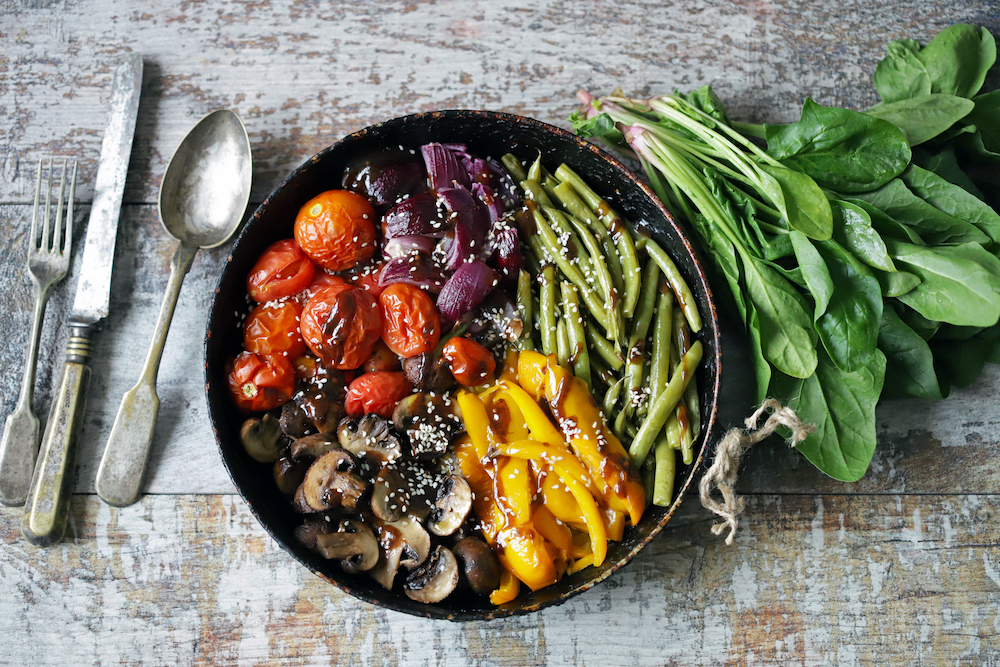Dirty Dozen + Clean 15: Your Guide to Pesticides in Produce
The Environmental Working Group just released its annual Dirty Dozen and Clean 15 lists of the fruits and vegetables most and least likely to contain pesticide residues.

Each year, we cover these lists here or in our magazine, but this year we’ve decided to focus on the positive first. We also like to advocate that you grow your own food and buy from your local farmers whenever possible.
Go to the farmer’s market and get to know some of the knowledgable and helpful people there. Some of your local farmers may use organic practices but haven’t gone through the full organic certification process yet because it can be expensive for a small business.
The Clean Fifteen list can help you prioritize both your health and your budget. As you’ll see in the Dirty Dozen list (further below), strawberries, greens, and apples are always vying for the most-pesticide-residue-found award. So, we always buy organic.
But you can save almost a dollar a piece by buying conventional avocados because they’re always found near the top of the Clean 15 list.
The EWG Clean 15 List
The Clean Fifteen is a list classified by EWG as least likely to hold pesticide residues. Relatively few pesticides were detected on these foods, and tests found low total concentrations of pesticides on them.
- Avocados
- Sweet Corn*
- Pineapples
- Onions
- Papayas*
- Frozen Sweet Peas
- Eggplant
- Asparagus
- Broccoli
- Cabbage
- Kiwi
- Cauliflower
- Mushrooms
- Honeydew Melon
- Cantaloupe
*You still may want to choose organic sweet corn and papayas to avoid the GMO versions of these.
The 2021 report found nearly 70 percent of non-organic produce samples tested positive for pesticides. Non-organic kale (which wasn’t even on the dirty dozen list a few years ago) was found to be the third most contaminated produce item behind strawberries and spinach.
It also found more than 90 percent of samples of strawberries, apples, spinach, cherries, nectarines, and kale tested positive for the residues of two or more pesticides.
The Bitter Truth About Kale
Nearly 60 percent of kale samples sold in the U.S. tested positive for dacthal, a possible cancer-causing pesticide prohibited in Europe that can also cause harm to the lungs, liver, kidney and thyroid.
“We were surprised kale had so many pesticides on it, but the test results were unequivocal,” says EWG Toxicologist Alexis Temkin, PhD. “Fruits and vegetables are an important part of everyone’s diet, and when it comes to some conventionally grown produce items, such as kale, choosing organic may be a better option.”
“Even low levels of pesticide exposure can be harmful to children,” said Dr. Philip Landrigan, a world-renowned pediatrician and epidemiologist. “When possible, parents and caregivers should take steps to lower children’s exposures to pesticides while still feeding them diets rich in healthy fruits and vegetables.”
The Environmental Working Group also identifies the non-organic produce least likely to be contaminated with pesticide levels, or the Clean 15. This list is helpful when you’re on a budget or live in an area with a limited selection of organic products.
The EWG Dirty Dozen List
USDA’s tests found a total of 225 different pesticides and pesticide breakdown products on popular fruits and vegetables Americans eat every day. Before testing, all produce was thoroughly washed and peeled, just as consumers would prepare food at home, showing that simple washing does not remove all pesticides.
- Strawberries
- Spinach
- Kale/Collard Greens/Mustard Greens
- Nectarines
- Apples
- Grapes
- Cherries
- Peaches
- Pears
- Bell and Hot Peppers
- Celery
- Tomatoes
“The main route of pesticide exposure for most Americans who do not live or work on or near farms is through their diet,” said EWG Research Analyst Carla Burns. “Studies have shown that eating fruits and vegetables free of pesticides benefits health, and this is especially important for pregnant women and children.”
Since 2012, the American Academy of Pediatricians Council on Environmental Health has emphasized that children’s exposure to pesticides should be as limited as possible, because pesticide exposure during pregnancy and early childhood increases the risk of brain tumors, leukemia, neurodevelopmental defects and other adverse birth outcomes.
Choosing organic foods is generally one of the best ways you can improve your family’s health as well as the health of our soils and environment.
Why Parents Should Be Extra Cautious of Raisins
Raisins scored worse than strawberries, nectarines, apples and cherries. In 2020’s report, 99% of raisins contained at least two pesticides. If raisins were included in EWG’s fresh produce rankings, they would have outranked strawberries as the food with the most pesticide residues.
Pesticides were even found on organic raisins, prompting researchers to note that prunes tend to have lower pesticide residues than both conventional and organic raisins.
“Children under the age of 15 eat a total of about 208 million pounds of raisins each year – about half of the raisins consumed in the U.S., according to Zion Market Research. The average U.S. consumer consumed about 1.25 pounds of raisins in 2017, the latest year for which the USDA has information. Zion’s industry analysis shows that slightly less than two-thirds of raisins are consumed as ingredients in other foods, with the rest eaten as a stand-alone snack.” (source)
